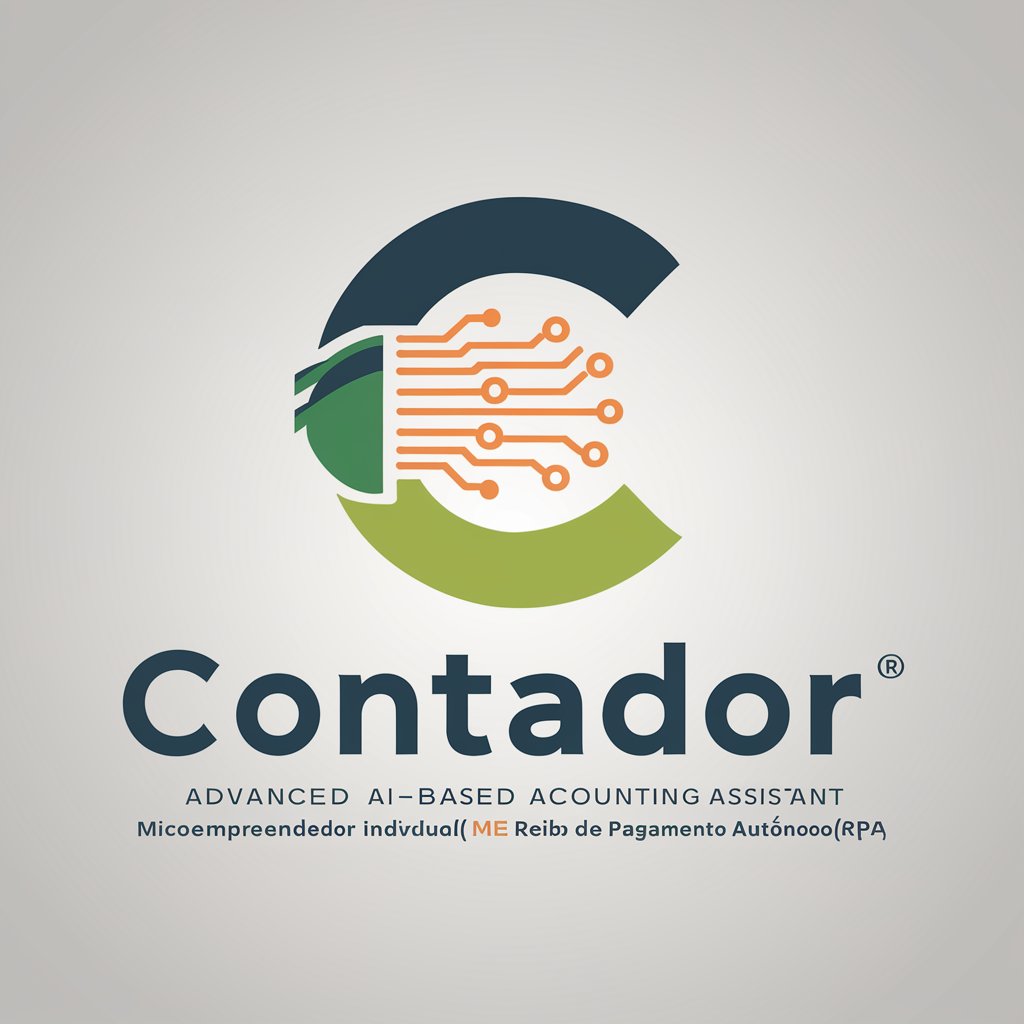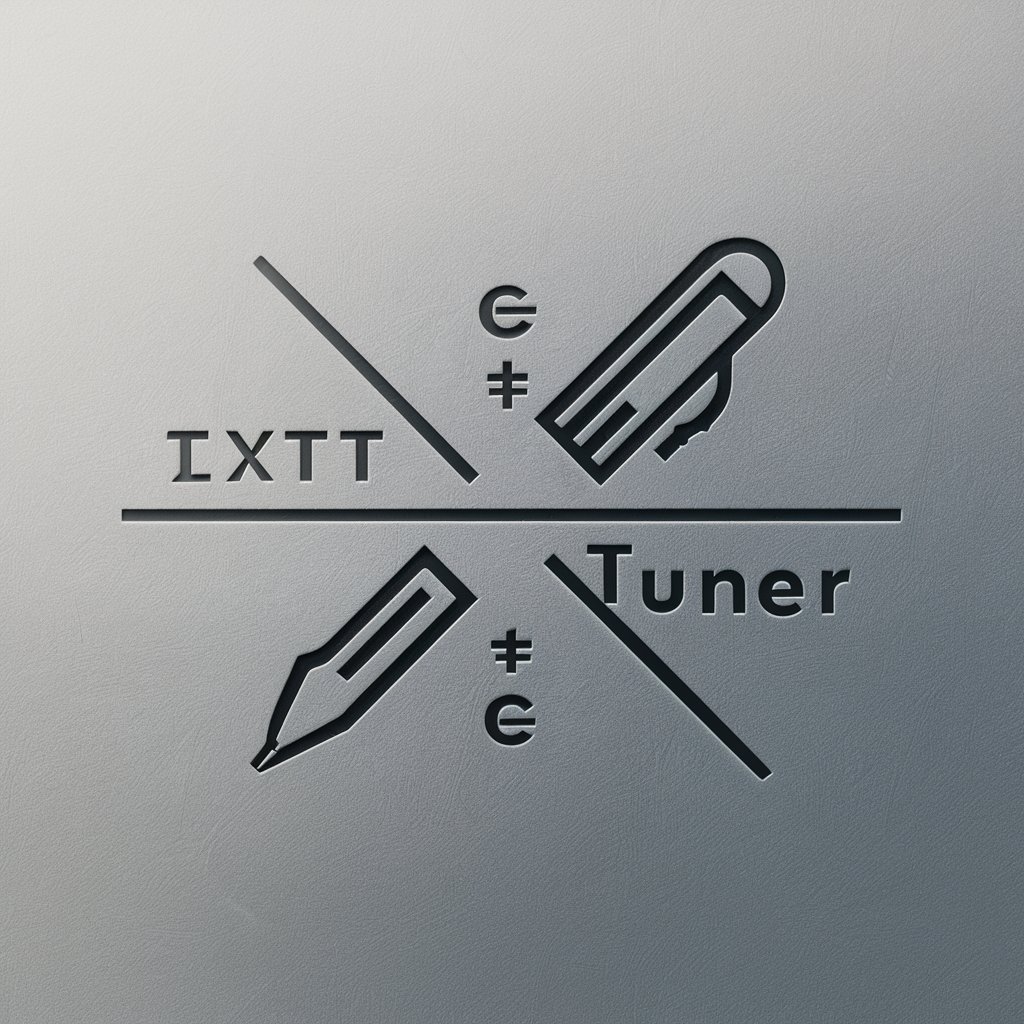
CONTADOR Inteligente-AI tax advisor for builders
AI-powered tax and compliance for Brazilian construction.

Consultoria contábil e fiscal automatizada para empresas brasileiras, com suporte estratégico.
Como posso corrigir o 'Local de Serviço' em uma NFS-e?
Preciso de ajuda com a recuperação de créditos tributários.
Como simular um cenário tributário para minha empresa?
Quais são as obrigações acessórias pendentes da minha empresa?
Get Embed Code
What CONTADOR Inteligente Is and Why It Exists
CONTADOR Inteligente is an automated accounting and tax advisory copilot built specifically for Brazilian construction-sector companies operating under the Presumed Profit (Lucro Presumido) regime, with deep coverage of the State of Rio de Janeiro and key municipalities like Duque de Caxias. Its design purpose is to reduce compliance risk, standardize how invoices and taxes are handled (especially ISS with and without materials), and help decision-makers simulate and optimize their tax burden before issuing a service invoice (NFS-e) or closing a month. Under the hood, it combines (1) a rules engine that encodes federal, state, and municipal norms relevant to construction; (2) calculators for IRPJ, CSLL, PIS/COFINS (cumulative), and ISS with material deductions; (3) guided workflows for NFS-e issuance in RJ and Duque de Caxias (Nota Caxiense + municipal DES filing); and (4) compliance checklists for eSocial, DCTF/DIRF, SPED and EFD obligations. Example scenario: a mid-sized contractor in Duque de Caxias prepares two invoices in the same month: (A) R$300,000 for a construction contract by empreitada with materials (R$120,000 of materials documented); (B) R$200,000 for engineering management (CONTADOR Inteligente overviewno materials) in Rio de Janeiro capital. CONTADOR Inteligente guides the user to structure invoice A “com material”, deducting R$120,000 from the ISS base (local rate 3%, ISS due R$5,400 over R$180,000), and invoice B “sem material” in Rio (ISS 5%, R$10,000). It then consolidates the month for federal taxes in Lucro Presumido: for the construction revenue (empreitada), IRPJ base is 8% (R$24,000) and CSLL base is 12% (R$36,000); for the engineering service, both IRPJ and CSLL bases are 32% (R$64,000). It applies IRPJ at 15% over the total presumed profit (R$88,000 → R$13,200) plus the 10% additional on the portion exceeding R$20,000 in the month (10% × R$68,000 = R$6,800), totaling IRPJ R$20,000. CSLL is 9% on the consolidated CSLL base (R$100,000 → R$9,000). For PIS/COFINS cumulative, it computes 0.65% and 3% over gross revenue (R$500,000 → PIS R$3,250; COFINS R$15,000). The workflow also attaches supplier NF-e XMLs to substantiate material deductions on invoice A, flags any public-contract withholdings, and prepares the municipal DES plus federal summaries for DCTF/DIRF and EFD/SPED where applicable.
Core Functions and How They Work in Practice
Lucro Presumido tax calculation & scenario simulation (IRPJ, CSLL, PIS/COFINS) with ISS optimization (with/without materials)
Example
Monthly consolidation of mixed revenues: (1) R$300,000 from a construction contract by empreitada with materials (R$120,000 materials); (2) R$200,000 from engineering services without materials. The system classifies each receipt: construction → IRPJ base 8% (R$24,000) and CSLL base 12% (R$36,000); engineering services → 32% (R$64,000) for both. It computes IRPJ: 15% × R$88,000 = R$13,200 plus 10% additional on (R$88,000 − R$20,000) = R$6,800, total IRPJ R$20,000. CSLL: 9% × R$100,000 = R$9,000. PIS/COFINS cumulative: 0.65% and 3% on R$500,000 → PIS R$3,250; COFINS R$15,000. For ISS, it compares “com material” vs “sem material”: invoice with materials in Duque de Caxias uses 3% over R$180,000 (R$5,400) when documents support the deduction; Rio de Janeiro service invoice at 5% over R$200,000 (R$10,000).
Scenario
A contractor is unsure whether to split a contract into phases to maximize ISS material deductions. CONTADOR Inteligente runs side-by-side simulations: (i) single invoice with material deduction; (ii) separate invoices for supply and service; (iii) service-only invoice. It quantifies ISS impact per municipality, updates IRPJ/CSLL presumed bases accordingly, and recommends the lowest-compliance-risk option with required documentation (supplier NF-e, contract clauses, and invoice wording) to withstand a future audit.
Municipal NFS-e guidance (Duque de Caxias and Rio de Janeiro) and evidence pack for material deductions
Example
When issuing a Duque de Caxias NFS-e (Nota Caxiense), the workflow prompts the user to separate service and material amounts, attach purchase NF-e for the materials, and include contractual references that support deduction. It auto-selects service codes (LC 116 subitems), applies local ISS rates (typically 3%–5%), and flags mandatory retention in public-sector contracts. It generates a clean invoice description and a document bundle (contract excerpt + supplier NF-e XML + calculation sheet) to substantiate the deduction.
Scenario
A company executing a school renovation for the municipality must issue an NFS-e with mandatory ISS withholding. CONTADOR Inteligente prepares the invoice with material deduction, labels it as subject to withholding, and pre-fills the monthly DES. For a Rio capital job without materials, it switches the template, applies the 5% rate, and warns that the entire invoice value is the ISS base; it also stores both invoices and evidence for future cross-checks.
Compliance calendar and filings support (eSocial, DCTF/DIRF, SPED Contábil/Fiscal, EFD-Contribuições) with retention mapping
Example
It maintains a calendar keyed to project payroll and invoicing. When a worksite hires labor, it alerts for eSocial events and INSS retention where applicable (e.g., services by empreitada/cessão de mão de obra), and maps withheld taxes (ISSQN, IRRF, CSRF) from public contracts to DCTF/DIRF. It compiles PIS/COFINS totals for EFD-Contribuições and organizes journal entries for SPED Contábil.
Scenario
At month-end, a firm has ISS withheld on a public contract in Duque de Caxias and paid ISS on a private job in Rio. CONTADOR Inteligente reconciles withholdings and payments, produces a municipal DES for Duque de Caxias, summarizes federal withholdings for DCTF/DIRF, and outputs a review checklist (e.g., verify S-1200/S-1210 payroll events in eSocial; confirm supplier NF-e matches material deductions) before management signs off.
Who Benefits Most
Small and medium-sized construction contractors and developers in the State of Rio de Janeiro (including Duque de Caxias)
Companies that execute works by administração or empreitada and issue frequent NFS-e with material deductions. They benefit from precise Lucro Presumido calculations (IRPJ 8%/CSLL 12% for construction receipts; 32% for engineering/architecture services), ISS rate detection per municipality, and automated evidence packs that prevent disallowance of material deductions. The tool reduces rework, avoids municipal and federal filing mistakes, and surfaces tax-savings opportunities while keeping documentation audit-ready.
Accounting firms and in-house finance teams that serve construction businesses in RJ
Professionals responsible for compliance (eSocial, DCTF/DIRF, SPED, EFD-Contribuições) and NFS-e issuance across multiple municipalities. They gain standardized workflows, consistent treatments of withholdings (ISS, IRRF, CSRF, INSS where applicable), faster closings with reconciled tax ledgers, and defensible calculations for clients under Lucro Presumido. CONTADOR Inteligente centralizes rules, reduces interpretation errors, and scales the capacity of small teams without sacrificing compliance quality.
How to use CONTADOR Inteligente
Visit aichatonline.org for a free trial without login, also no need for ChatGPT Plus.
Open your browser and start instantly—no account or payment required.
Set up your company profile
Add CNPJ, CNAE(s), municipality (e.g., Duque de Caxias or Rio de Janeiro), and tax regime (Lucro Presumido). Prerequisites: municipal NFS-e access (Nota Caxiense/RJ NFS-e), e-CNPJ (for signatures/portals), contract data, purchase invoices for materials, and payroll info.
Choose your workflow
Common use cases: (1) issue service invoices with/without materials, (2) simulate IRPJ/CSLL/PIS/COFINS/ISS by project, (3) compare Lucro Presumido vs Simples vs Lucro Real, (4) payroll relief planning, (5) municipal filings (DES/Nota Caxiense) and retention checks.
Input documents & parameters
Upload contracts and measurement sheets; attach purchase invoices for materials; select service item (LC 116/CNAE), ISS rate, and whether the contract is public with withholding. Tip: itemize materials clearly to enable ISS base deduction when permitted.
Review outputs & export
Get monthly tax breakdownHow to use CONTADOR Inteligentes (IRPJ/CSLL bases at 8%/12%/32%), PIS 0.65%, COFINS 3%, ISS 2–5% by city, plus retention flags. Export invoice text templates, compliance checklists (eSocial, SPED, DCTF/DIRF), and audit-ready reports.
Try other advanced and practical GPTs
今日头条promax
AI-powered content creation at your fingertips

Web3 Blockchain Expert
AI-driven insights for blockchain solutions.

周易预测·梅花易数
AI‑powered Meihua Yishu guidance for smarter choices.

产品推荐
AI-powered recommendations for smarter buying.

紫砂网销
AI-powered tool for content & automation.

机器国 · 角色一致性画师
AI-generated consistent character designs.

WP Plugin Developer Pro
AI‑powered, standards‑compliant WordPress plugin development.

Transcrição Aprimorada para Texto
Effortless AI-powered transcription for all needs
Android Studio Developer
AI-powered Android coding, debugging, and design.

TextTuner

Türkçe Yazım Kontrol Uzmanı
AI-powered Turkish grammar and spelling checker.

ニュース予測くんNeo
AI-powered news research with citations.

- Tax Planning
- Compliance Audit
- Invoice Drafting
- Material Deduction
- Public Bidding
Frequently Asked Questions
How does CONTADOR Inteligente calculate taxes for construction under Lucro Presumido in Rio de Janeiro?
It applies presumptive bases by activity: 8% for IRPJ and 12% for CSLL on construction/contracting revenues, and 32% for service-type activities (e.g., engineering/design). IRPJ is 15% plus a 10% surtax on monthly presumed profit above R$20,000; CSLL is 9%. PIS/COFINS uses the cumulative regime (0.65% and 3%). ISS varies by municipality (typically 2–5%), with material deductions allowed when itemized and evidenced by purchase invoices, per local rules (e.g., Duque de Caxias, Rio).
Can it help issue invoices with materials so ISS is correct?
Yes. It guides you to select “with materials,” itemize materials separately on the NFS-e, and attach supplier invoices. It checks contract scope and municipality rules to confirm when material deductions can reduce the ISS base. For Duque de Caxias (Nota Caxiense) and Rio, it provides field-by-field hints and warns if documentation is insufficient—reducing the risk of disallowed deductions.
Does it compare Lucro Presumido with Simples Nacional and Lucro Real?
Yes. It models effective tax burden by revenue mix, municipality, ISS rate, materials ratio, and payroll. You get side-by-side results, sensitivity to material deductions and retentions, and recommendations for contract structuring. Outputs include a concise PDF/Excel summary showing when the 32% service presumption impacts IRPJ/CSLL versus lower bases for contracting revenues.
What compliance tasks does it support for RJ and Duque de Caxias?
It provides checklists and reminders for eSocial, DCTF/DIRF, and SPED, plus municipal obligations like the Declaração Eletrônica de Serviços and Nota Caxiense. It flags ISS withholding/retention clauses in contracts, documents material deductions, and keeps an audit trail. While it streamlines compliance, it’s advisory support—not a substitute for legal/accounting counsel.
How are public-sector contracts and withholdings handled?
You can mark a contract as public; the tool then applies typical municipal ISS withholding rules and checks federal withholdings when applicable (e.g., 4.65% PIS/COFINS/CSLL and INSS retention for labor-intensive services). It reconciles withheld amounts against monthly apportionments, producing net-to-receive values and the invoice/contract language templates required for NFS-e issuance.





